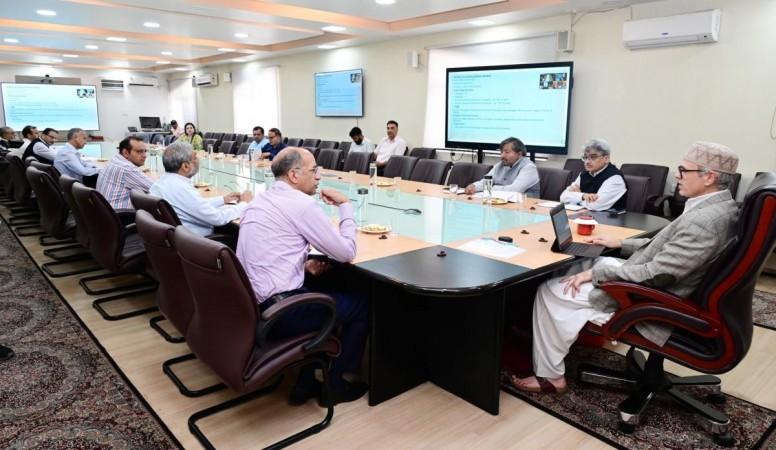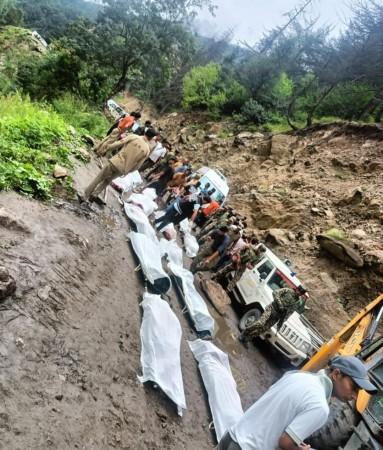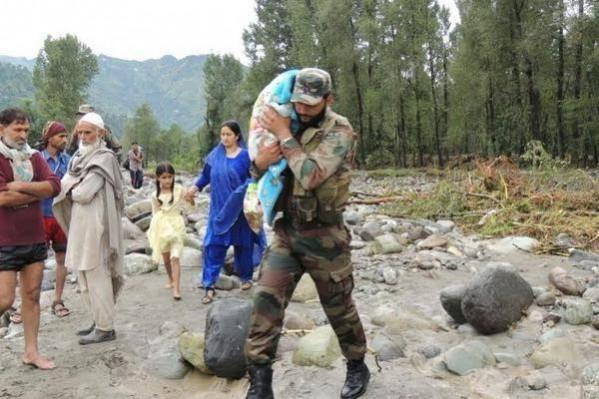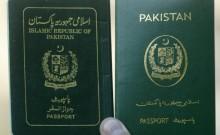
Contrary to conflicting reports about untraceable persons after the devastating August 14 cloudburst at Chashoti village in Kishtwar district of Jammu and Kashmir, Chief Minister Omar Abdullah on Thursday declared that 33 people are still missing after the catastrophe.
So far, 65 people have lost their lives, of whom 62 bodies have been identified and handed over to families. The identities of three bodies have yet to be established.
The Chief Minister chaired a meeting today to review the ongoing relief and rehabilitation measures for people affected by the recent cloudbursts and flash floods in Kishtwar and Kathua districts.
While addressing officers, the Chief Minister stressed the need for speedy relief assistance, restoration of essential services, and long-term strategies to safeguard vulnerable areas from recurring natural calamities.
MeT department issued a warning
"Whether it was a cloudburst or a glacial lake outburst, the fact remains that this tragedy struck at the busiest time of the year in Chashoti village. Had it occurred at any other time, the impact might have been less severe. These are lessons we must take forward. The Meteorological Department had issued warnings, including advisories against unnecessary travel, which underscores the importance of adopting clear SOPs and guidelines for highly vulnerable regions," the Chief Minister observed.
He said short-term priorities must remain focused on relief and rehabilitation, while medium- and long-term measures must include a holistic assessment of vulnerable areas by experts, protection of agricultural lands, discouraging habitation along flood-prone nallahs, and creation of preventive mechanisms.

Regarding the ongoing rescue operations, the Chief Minister noted: "Unfortunately, with 33 people still missing, it is safe to presume we may not find any of them alive. Our priority now is to retrieve the bodies to hand them over to their families. Equally important is rehabilitating those whose homes and livelihoods have been devastated."
He assured all possible government support in the reconstruction of damaged homes, restoration of agricultural land, and provision of essential services. He directed the concerned departments to work out temporary arrangements, including the deployment of generators, to ensure electricity supply in affected areas until road connectivity is fully restored.

Out of 65 recovered bodies, 62 identified
Earlier, Divisional Commissioner Jammu Ramesh Kumar briefed the Chief Minister on the relief and rehabilitation activities in detail, while Deputy Commissioners gave detailed presentations on the situation in both districts.
Deputy Commissioner Kishtwar informed that 65 people have lost their lives so far, of which 62 bodies have been identified and handed over to families, while 33 persons remain missing. He said 66 persons were rescued alive, and temporary shelters, food, medicines, and health facilities are being provided. He further reported that the Army, Police, NDRF, SDRF, and civil administration are jointly engaged in rescue and relief operations with heavy machinery deployed on the ground.

Deputy Commissioner Kathua informed the meeting that seven persons lost their lives and 13 sustained injuries, with around five areas severely affected. Immediate relief was distributed to the victims, NGOs were engaged, and temporary shelters were established.
He said road connectivity, which has been badly disrupted, may take about a week to restore, while efforts are underway to resume electricity, water supply, mobile services, and other essentials. He added that both private and public infrastructure have suffered significant damage.
The Chief Minister directed all concerned to intensify relief efforts on a war footing while simultaneously preparing medium- and long-term disaster mitigation plans for Jammu and Kashmir's vulnerable areas.











